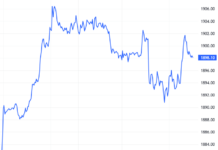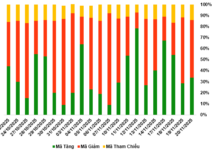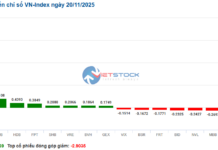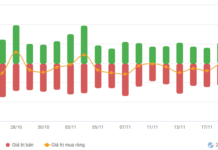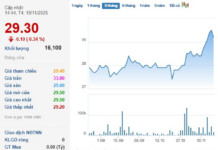
Deputy Governor of the State Bank of Vietnam, Pham Thanh Ha, explains the reasons for the low credit growth in the first months of the year and the solutions – Photo: VGP/Nhat Bac
On the afternoon of March 2nd in Hanoi, following the regular Government meeting earlier in the day, the Government Office held the press conference on the regular Government meeting in February 2024.
At the press conference, Pham Thanh Ha, Deputy Governor of the State Bank of Vietnam, gave explanations for the reasons for the low credit growth in the first months of the year and the solutions of the State Bank in the following time period.
Deputy Governor Ha stated that on the last day of 2023, the State Bank of Vietnam identified an appropriate credit growth target in line with the economic growth and inflation control objectives, with a credit growth rate of around 15% in 2024. Based on this, the State Bank of Vietnam allocated all credit targets to each credit institution on December 31st so that the credit institutions could proactively plan for credit growth.
In the public announcement of the State Bank of Vietnam, the principles for allocating and delivering credit targets to all credit institutions were clearly stated.
“In the beginning of 2024, after monitoring the first 2 months, we observed that credit growth was slower compared to the same period in previous years, despite having abundant liquidity. In January and February, as it is the Lunar New Year period, credit activities would decrease and lending activities would not experience the same growth as in the previous Quarter IV,” Ha said.
According to Deputy Governor Ha, the general reason is the seasonal factor. After having a strong credit growth of about 4% in December, usually in the following Quarters, economic activities would be more active, resulting in more lending activities. However, in January and February, because of the Lunar New Year, credit activities would decrease and lending activities would not grow as much as in the previous Quarter IV of the previous year.
This year, there is also another factor – the global economy has not truly recovered yet, and the main markets of Vietnam have not developed strongly, which affects the output and export factors. Meanwhile, the domestic market is still difficult, so the credit demand has also decreased.
Regarding the solutions, the State Bank of Vietnam has implemented various measures to promote credit growth for credit institutions. At the beginning of February, the State Bank of Vietnam issued a directive to credit institutions to focus on enhancing credit growth solutions, simplifying loan procedures to increase customers’ access to capital, focusing on strengthening digital transformation activities in credit procedures to increase customers’ access to capital and expand credit activities in banks.
In February (on February 20th), the State Bank of Vietnam also held an industry-wide conference to promote banking credit, support businesses, and boost credit growth.
With many measures like these, in the coming time, the State Bank of Vietnam will continue to review the existing documents according to the newly promulgated Credit Organization Law. The State Bank of Vietnam will review the documents and guidelines to ensure the necessary adjustments according to the decree, law, and increase customers’ access to credit.
Therefore, the State Bank of Vietnam has made and is making a lot of efforts and solutions to overcome difficulties in production and business activities and promote credit growth.
On the lending side, there is abundant liquidity, and banks are ready to provide capital for the economy. However, there needs to be more coherent policy coordination from various agencies. It is essential to improve the effectiveness of funds like the credit insurance fund for small and medium-sized enterprises, the fund for the development of small and medium-sized enterprises, to increase the access to credit for these businesses.
For borrowers, the State Bank of Vietnam encourages businesses to actively implement restructuring solutions, have feasible investment or business projects, prove the feasibility of their projects, be transparent, enhance financial capacity so that lenders (credit institutions, commercial banks) can appraise and provide lending services conveniently in the future.
Deputy Governor Ha said that credit in January decreased, and in February, the decrease was less because of the increased credit demand in February. Therefore, credit growth improved the following month. The State Bank of Vietnam will continue to monitor the growth rate in March, Q1, and the following months to have specific solutions to promote credit growth, support borrowers, and promote economic growth.

